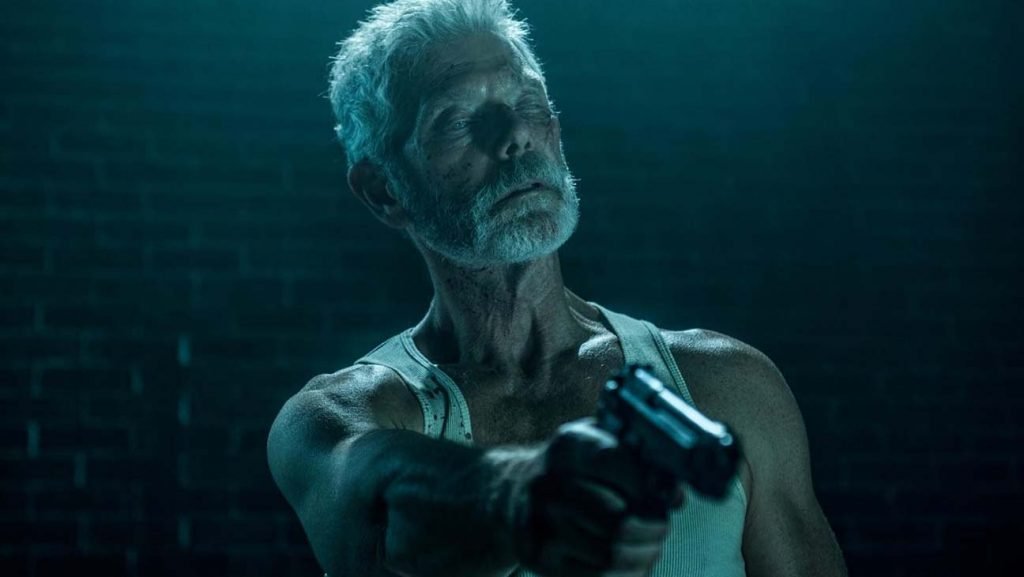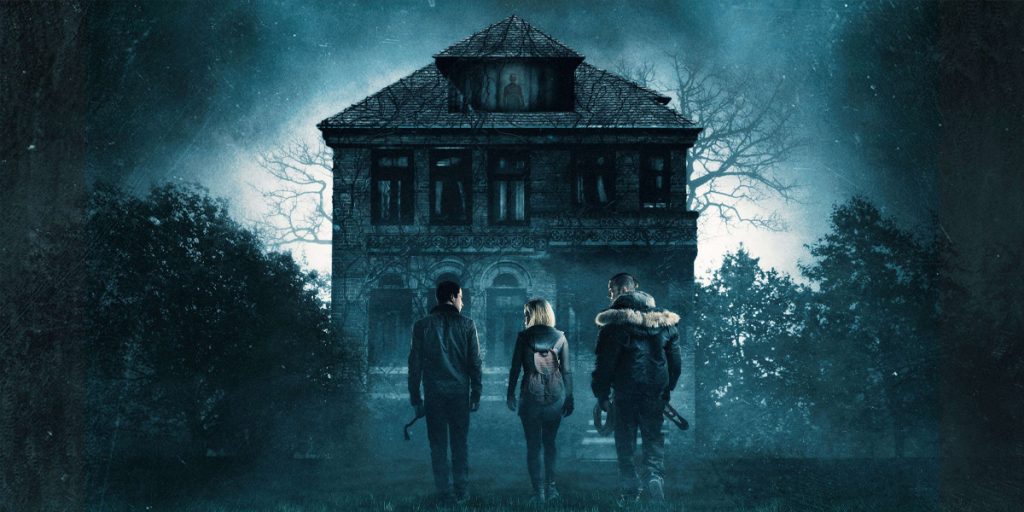Don’t Breathe manages to rise above its surprisingly basic script, and creates a chillingly intense experience to keep you on the edge of your seat.
The concept of a home invasion thriller is nothing new, with plenty of films attempting (and many succeeding) to put the audience directly into this nightmare scenario and create a tense, thrilling confined horror that keeps you on the edge of your seat. Don’t Breathe, however, takes this concept and flips it on its head, asking the reverse question – what if the invaders weren’t the villains? The result is equally as terrifying, and is elevated by precise direction and a haunting, relentless score that keeps you on your toes throughout.
The premise of Don’t Breathe is short and simple – three amateur thieves attempt to steal a life-changing sum of money from a blind war veteran. However, the group encounters problem after problem as they realise that their target will stop at nothing to protect his money – and his secrets. They soon find themselves stuck inside the home, unable to escape and unwilling to give up the jackpot prize. The film offers a refreshing take on the genre and values its core story above all else, not willing to sacrifice those genuinely terrifying moments for the sake of a cheap scare. The atmosphere gradually builds and builds throughout the film’s short runtime, which results in a level of intensity that never could have been achieved without such dedication to the evolution of this story.
The magic of Don’t Breathe is that, on paper, the film would probably appear painfully average. The characters often make unjustifiable decisions, the narrative structure is nothing audiences haven’t seen before, and the scary moments likely wouldn’t feel so intense without director Fede Álvarez’s keen eye for the genre, or Pedro Luque’s uniquely unsettling cinematography. It’s because of this behind-the-screen talent (alongside a chilling performance from Stephen Lang as the film’s blind antagonist) that the concept works as successfully as it does. The script itself isn’t perfect, but the way that the filmmakers manipulate its confined location and unique camerawork rises above that.

By far the most impressive feature of Don’t Breathe is its totally distinctive visuals and shot selection. Every single frame is selected to pull out as much tension and fear as possible, whilst still forming an exciting and logical story that keeps viewers invested. The plot is mostly unpredictable, but even when it veers towards a more formulaic route, the atmosphere alone is enough to keep you on edge and unprepared for the way the story plays out. The film features a wonderfully uncomfortable score from composer Roque Baños that continually drives throughout the story, and elevates those intense scenes even beyond the story itself.
It’s hard to discuss Don’t Breathe without touching on Stephen Lang’s standout presence as the unnamed war veteran who carries the film’s central conflict on his shoulders. He captures the eeriness of the character perfectly, expertly displaying his disturbed and questionable motives and hardly even saying a word. From the way he moves, to the way he ‘looks’ at people, and even just the way he breathes – the character instantly becomes one of the scariest horror figures in recent memory, despite being just a regular man. The whole success of the film as an exercise in horror hinges on whether or not the audience is scared by the character – and in that regard, the film performs perfectly.
But it’s not just the visuals and the performances that elevate Don’t Breathe above many similar horror films – the delicate sound design and original score are equally as important and effective in building its atmosphere and tone throughout. In a fashion true to the film’s unique premise, every breath, every whisper, every creaking floorboard is vital to placing the audience in this world and creating this helpless feeling of no escape that is shared by the characters on screen. The droning score acts to the same effect, forcing you into the same state of endless panic and fear by overwhelming every one of your senses.
The use of a gradually intensifying atmosphere is nothing new in horror films. 1980’s The Shining is a classic example of this, as it doesn’t rely on bloody gore or shocking jumpscares to terrify the audience – but rather unnerving sounds and music, disturbing performances and unusual cinematography. Don’t Breathe, whilst it may not quite reach those emotional highs of Kubrick’s beloved classic, takes a very similar approach. Early on in the film, we are given an extended tracking shot of the house, which puts us immediately in this world and displays the inability to escape that these characters are faced with. It’s extremely effective, and establishes the continuous ambiance that the film utilises.
Overall, Don’t Breathe is an expertly directed exercise in both the thriller and horror genres, which gradually grows under your skin and gets more and more intense throughout its short runtime. The script itself might feel empty in some areas, but the film is precisely shot and crafted with the sole intention of making the audience uncomfortable and on edge – which it does perfectly. It isn’t the next horror masterpiece, but it makes for a consistently entertaining rollercoaster that never overstays its welcome.
Don’t Breathe is now available to watch on digital and on demand.

